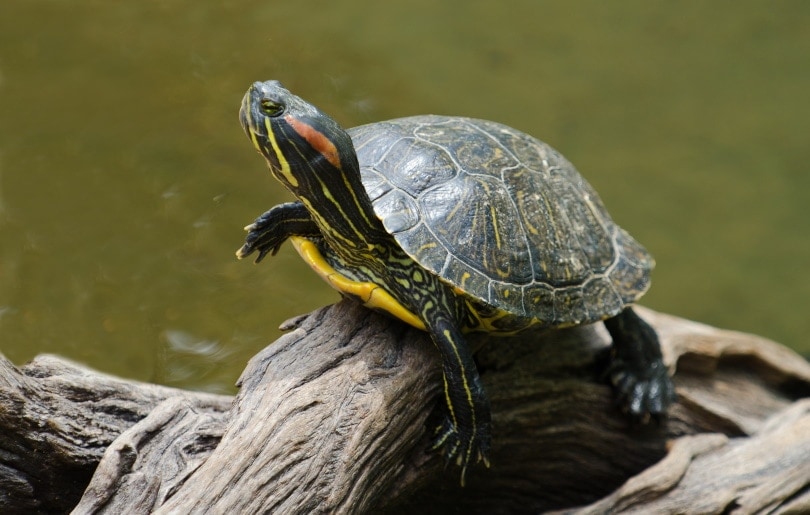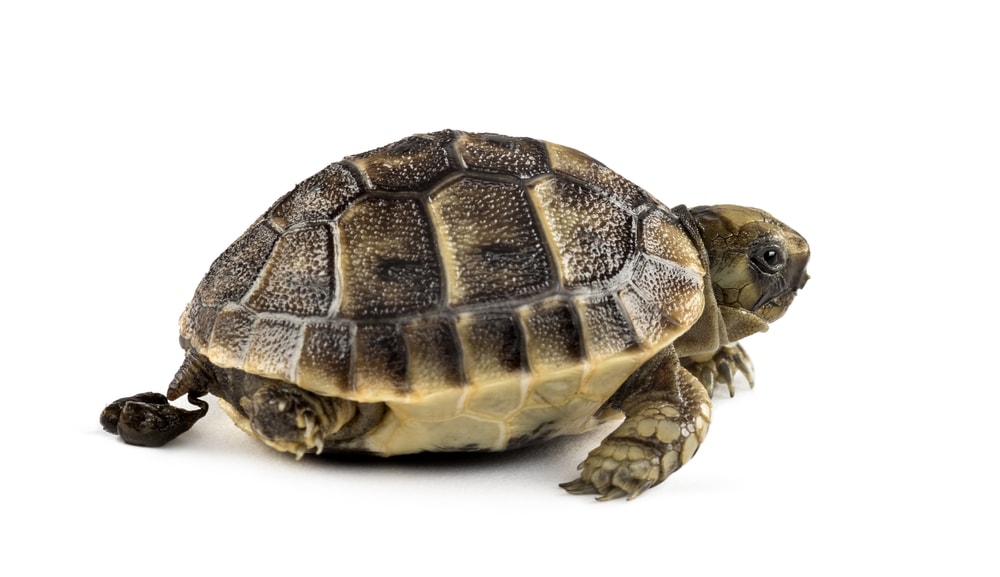How Much Water Should Be in a Turtle Tank? Vet-Reviewed Setup Guide
Updated on
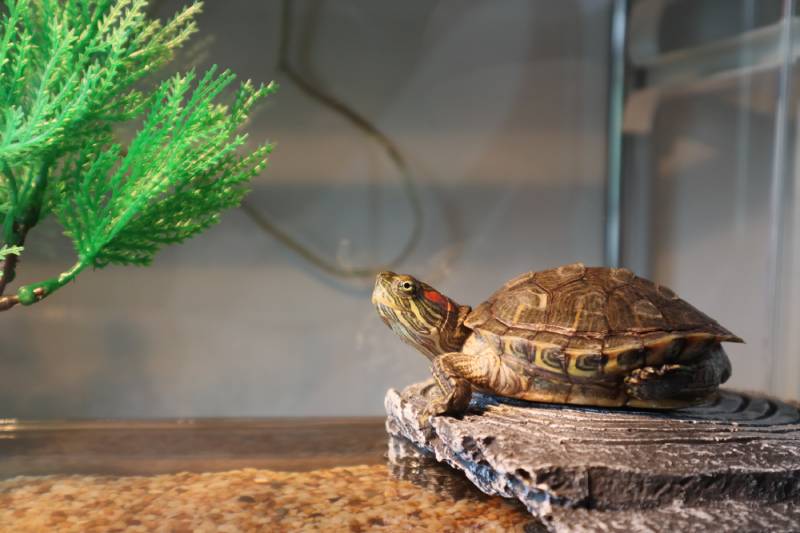
There are various species of turtle available as pets and each species will have its own unique care requirements. If you have decided that an aquatic turtle is the perfect match for you, it’s your job to make sure they have an ideal habitat setup so they can live happily in their new home.
One of the most important considerations when you get started is how much water they will need in the tank. So, how much is appropriate? The truth is, as long as your turtles have an easy to access ramp to get out of the water whenever they want to, there’s no rule on how much water they should have, but 20 gallons of water is considered acceptable for a small turtle. See below for more information regarding the proper aquatic turtle setup and how to best prepare for your new pet.
Turtle Tank Setup Guide
Tank
When choosing the right tank, you should always go for a high-quality glass tank that is designed to hold the amount of water needed to house your turtle. You should never purchase a reptile terrarium that is made for land-dwelling animals, as the glass is much too thin and can easily break with the pressure from the water.
In most cases, the length of the tank should be around three to four times the turtle’s length and the width should be twice their length. As far as height goes, consider one and a half to two times the length of the turtle and choose a tank that is tall enough to leave 12 inches of space between the highest point the turtle can reach and the top of the tank.
As mentioned above, this tank will need to hold at least 20 gallons of water for the smallest turtles. If your turtle isn’t fully grown, you can spring for a much larger aquarium, if needed, to avoid the hassle of having to upgrade in the future.
Consider adding even more space if you adopt extra turtles. The red-ear slider (a common pet turtle) appreciates a water depth of around 30 centimeters.
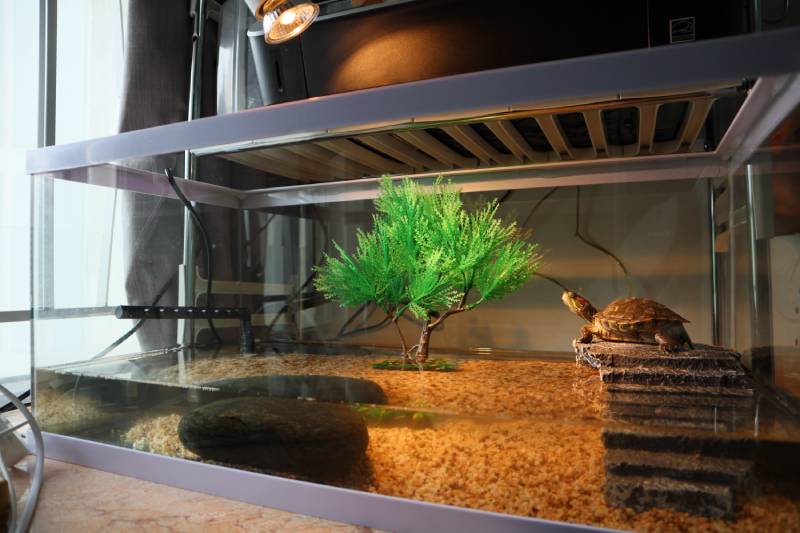
Lighting
Your aquatic turtle is going to require high quality UV lighting to maintain optimal health. You can choose between a light that hooks onto the tank or one that is separate but can be directed down into the tank. But regardless of which type, it will need to be placed above a designated basking area.
It’s a good idea to get a light that offers both UVA and UVB lighting, as your turtle can benefit from both. Having the light linked to a timer is a great way to mimic natural night and day cycles to keep your turtles in a normal routine. Generally, they will need 12 to 14 hours of light, followed by 10 to 12 hours of darkness.
Filtration System
A water filtration system is going to be very important to maintain your turtle’s health. Turtles produce quite a bit of waste and are known for being very messy, which contaminates the water. While expensive, quality large canister filters are highly recommended because they are powerful, work well, do not get clogged as easily, and will reduce how much cleaning you must do.
An internal filter is also an option, but they are generally better for small to medium sized tanks. They are less expensive but do tend to get clogged more easily, will require more frequent cleaning, and will not last as long. While the upfront cost of the larger canister filter is higher, the long-term costs are often lower.
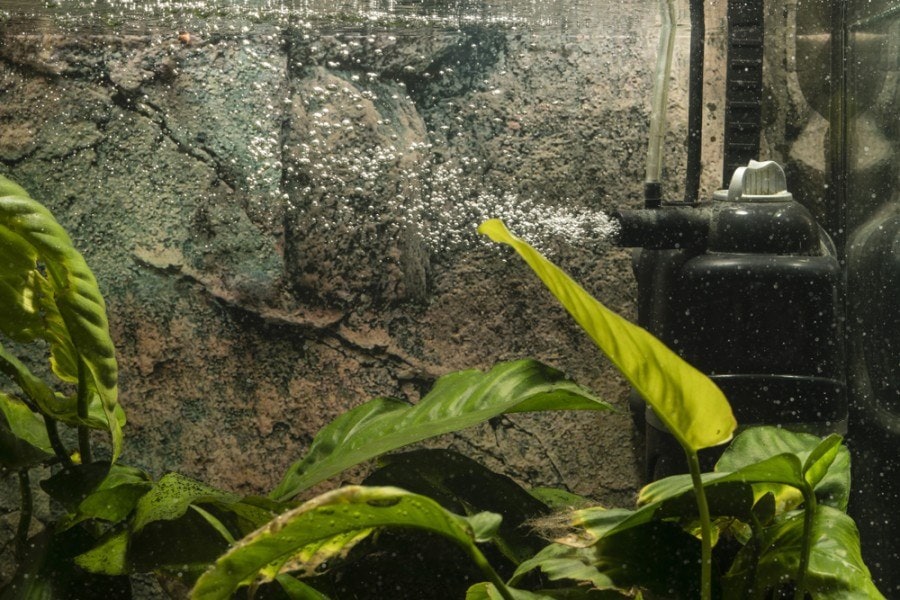
Water Heater
Many aquatic turtle keepers will opt to use a water heater to help maintain a consistent temperature in the tank all year round. This may not be necessary in every case, as the required water temperature will vary by species. It’s a good idea to look into your specific turtle’s needs and check the temperature of the water. If it isn’t staying within the ideal temperature range, one of these submersible heaters can do the trick.
Thermometer and Hygrometer
Since turtles and other reptiles cannot thermoregulate, or generate their own body heat, they rely on their environment to maintain proper body temperature. In captivity, their setup needs to be monitored closely to make sure their environment is reflecting the proper temperature and humidity levels.
There are certain tools you will need as a keeper to monitor these conditions to ensure they are healthy and comfortable. Thermometers can be used to monitor both the water temperature and the temperature of the basking area, while a hygrometer can be used to monitor the humidity level within the tank.
The proper temperature and humidity levels will vary by species, so it’s important to do your research on the kind you plan on keeping as a pet. If you ever have any questions regarding your turtle’s needs, don’t hesitate to reach out to your veterinarian for advice.
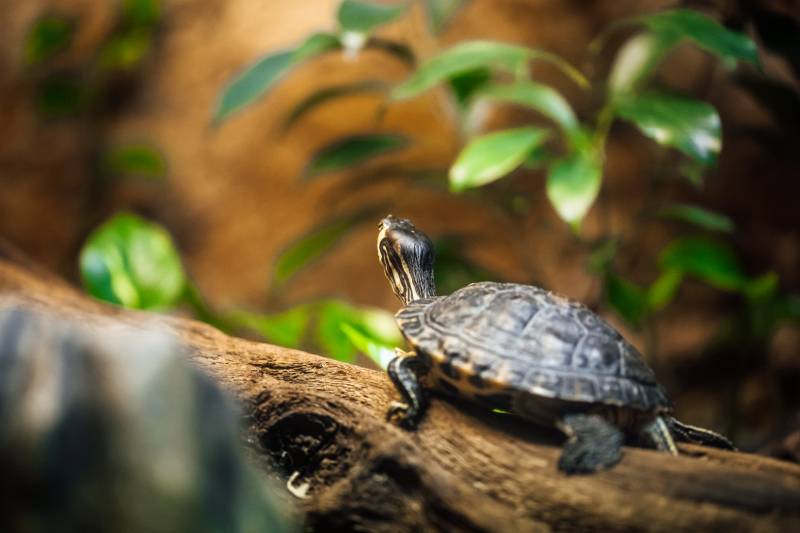
Substrate
Some keepers choose to put some sort of substrate on the bottom of the tank, but it’s not always a requirement. In fact, it may make cleanup more troublesome. It’s only necessary if you plan to have live plants in the aquarium (do note that they require additional care as well). The most common types of substrates include:
- Sand- the most difficult type of substrate to clean, but it mimics their natural environment and certain species such as the soft-shell turtle will enjoy digging and burrowing.
- Gravel- visually appealing but will often trap waste and debris. It’s important that gravel is appropriately sized, as some turtles will eat it and be at risk of a serious impaction. Choosing gravel that is at least ½ inch in diameter is recommended.
- Fluorite- a porous clay gravel that is ideal for any plants used in the tank. Turtles are less likely to eat fluorite, but it’s still recommended that you choose appropriately sized pieces to be on the safe side. Fluorite provides plenty of nutrients for plants. Turtles generally don’t eat it, but you should still opt for larger fluorite just to be safe.
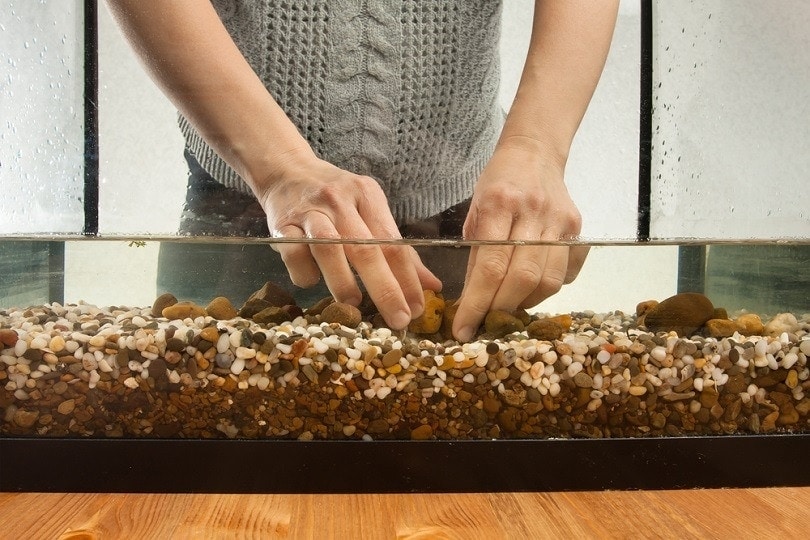
Designated Basking Area
Turtles require a basking area that’s at least 33% of the total surface area of the aquarium.
This designated basking area is needed so that the turtles have a space to get out of the water, dry off, and bask. As a general rule, this spot should be spacious enough that it is one and a half times the length of the turtle.
There are plenty of different options that can be used when creating a basking area such as store-bought rocks deemed safe for turtles, logs, or even specially made turtle docks which adjust to the water level and allow for more space within the aquarium. Never use anything you take from the outdoors, as rocks and logs can be contaminated and put your turtle’s health at risk.
Please note that most pet turtles only use the water when they feel like they want to escape a perceived threat. If they’re used to you, you might find them always hanging out in their basking area. This isn’t a cause for concern.
Decor
Turtles will not require any terrarium décor, but many keepers will choose to add some not only for looks but to also help them feel more secure within their environment. This can include plants, logs, rocks, and other landscape ornaments.
If additional décor is used, it’s important to make sure it does take up too much space or crowd the basking area. If plants are used, it’s important to ensure they are non-toxic for your turtle, as they tend to nibble on them. You should also be mindful of any decorations with sharp edges or anything smaller than 1.5 inches in diameter.
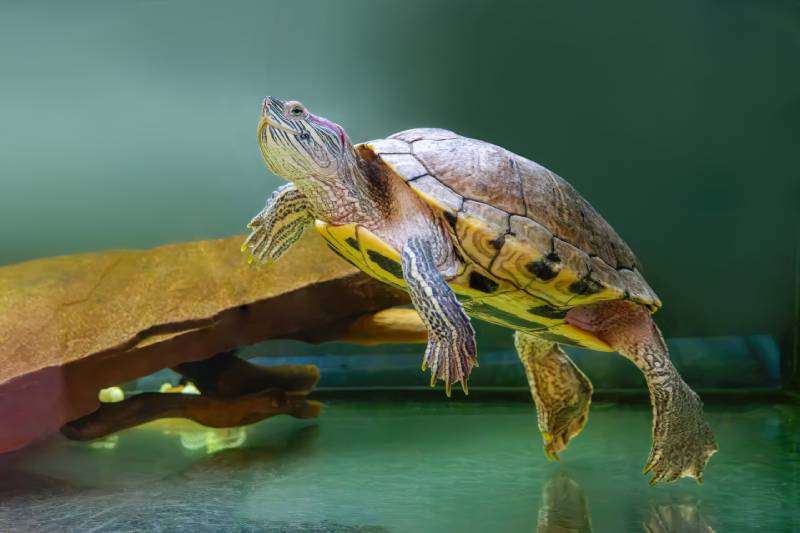
Conclusion
Aquatic turtles will require 10 to 15 gallons of water per inch of shell length, and it should take up approximately 75 percent of their environment. Semi-aquatic turtles will require more land area within their habitat, so it’s a good idea to research your species so that you can not only implement the best habitat setup, but so that you can meet their specific care and husbandry requirements.
Featured Image Credit: Mark Leung, Shutterstock




